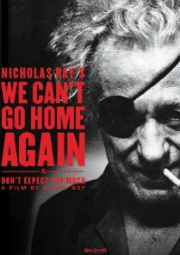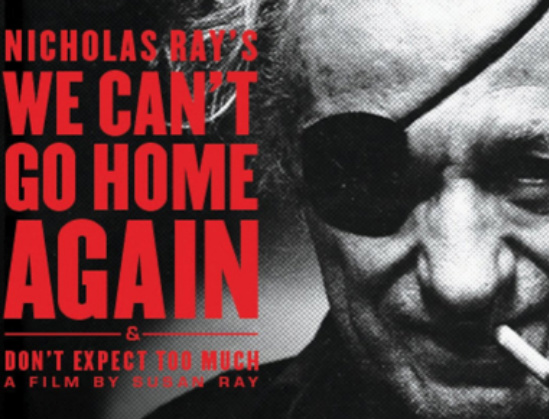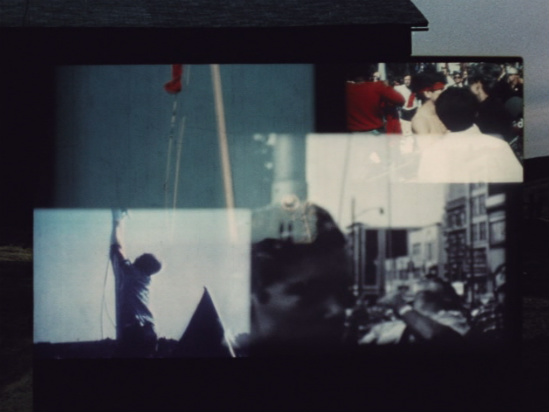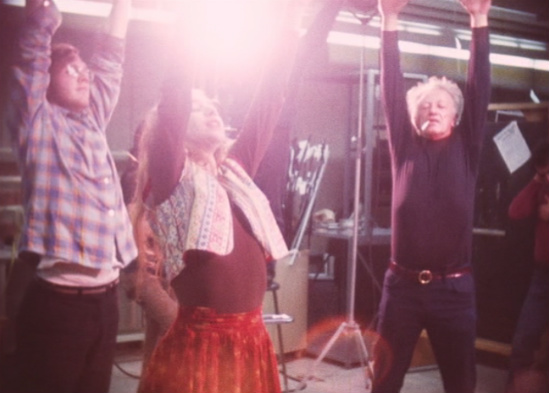BUY FROM AMAZON: CLICK HERE! 
STUDIO: Oscilloscope Laboratories
MSRP: $34.99
RATED: Not Rated
RUNNING TIME: 170 minutes
SPECIAL FEATURES:
• Full length making of documentary Don’t Expect Too Much
• Extended interviews with Jim Jarmusch and Bernard Eisenschitz
• 1977 CBS profile of Nicholas Ray
• Short films “The Janitor” and “Marco”
• Booklet featuring Ray’s artwork, essays, and photographs
The Pitch
Revered director Nicholas Ray’s lost experimental film gets a well-deserved package.
The Humans
Directed by Nicholas Ray, starring Richie Bock, Tom Farrell, Danny Fisher, and Jill Gannon.
The Nutshell
In the early ’70s, director Nicholas Ray collaborated on a film with his students. It turned into the last major project of his life and until the time of his death in 1979, he was still altering it. The result is an engaging experimental film that documents the dissolution of the ’60s counterculture and so much more.
The Lowdown

Ray was losing the vision in his right eye, but the eye-patch added another dimension to his tough persona.
During the early 1970s, revered A-list director Nicholas Ray (Rebel Without a Cause) found himself looking for a job. He took a gig as a film professor at Harpur College in Binghamton, New York. His approach to teaching film was to have his students make a feature-length of their own, all the while rotating positions in front of and behind the camera, including himself. This experimental method quickly became something much more and culminated in We Can’t Go Home Again – Ray’s notorious lost film.
Shot between 1971 and 1973 and created entirely by Ray and his misfit band of film students, We Can’t Go Home Again breaks all conventions of narrative, visuals, and even presentation. There’s a heavy use of split screen – sometimes up to six images are playing at once. A tool called a “video synthesizer” was used to transform frames into an acid-trip kaleidoscope of wonders. Ray’s appetite for destruction went beyond breaking the visual boundaries of cinema though. In his cross-hairs were also the narrative and linear conventions of the time.
He used himself and his students as the actors. There was no script and what loose narrative there is reflects the reality of the situation: Ray is their film professor and they’re all making a movie together. In making the movie, the students express their dreams, fears, and spiritual terrors and in doing so, Ray becomes their student. Christ that sounds corny and pretentious, but it’s true. The students become this emotionally-naked community at a generational crossroads and Ray is their observer.
There are some intensely emotional moments during the film’s 90 minutes – from one student crying as he shaves his beard (identity) to another talking about how some guy wants to pay her to masturbate in front of him, there’s a lot in the film expressing the dissolution of ’60s and the fears that went along with it. These intensely emotional moments feel very intimate and separated from the larger narrative, but when we’re flying this loose who cares.
Ray’s role as the observer doesn’t mean that his presence is not felt in the film. He’s kinda hard to miss with his towering machismo and eye-patch. It’s easy to see why these students were drawn to him and willing to bare themselves so much. He managed to competently tap into their angst and create a visual companion to match it. Does it always work?
No. Not for me, at least. All of the generational angst really turns me on, but I can’t front, I couldn’t make heads or tails out of some of the “artsy” moments in the film and I don’t get the point of the acid-freak-out visuals. I like in ’60s exploitation movies when go-go dancers would get down in front of them, but as part of a visual narrative I don’t understand the message.
I can’t say I wasn’t engaged though. These students threw down everything they had emotionally and let it go for Ray. The result is a wildly ambitious, hot-blooded document of a generation at the cusp of something big. You have to admire the communal effort behind the film as well. As Ray puts it near the end of the film, “No one does it alone, not even the madness.”
The Package
Included in Oscilloscope Laboratories’ fantastic package is the documentary Don’t Expect Too Much, made by Ray’s wife Susan. The doc details the making of the film and includes interviews with the students involved, as well as others Ray mentored, such as Jim Jarmusch. The students discuss Ray’s constant intensity with admiration. The guy only slept about four hours a day and was always thinking about the film. There’s also a real emphasis on Ray’s gut instincts that he seemed to live by. If you like We Can’t Go Home Again then you’ll adore Don’t Expect Too Much.
Another feature contains extended interviews with Jim Jarmusch and Ray’s biographer Bernard Eisenschitz from the documentary.
Also included are two of Ray’s short films – “The Janitor” and “Marco” – as well as a brief profile of Ray that aired in 1977 on CBS.
Overall this is a very impressive set for a challenging and unique film.
Rating: 




Out of a Possible 5 Stars


